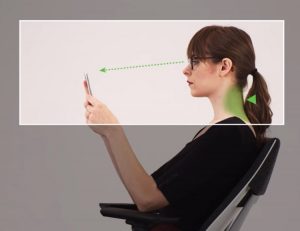In the world of ergonomic office chairs, the debate over the ideal type of armrest continues. Different chairs offer various options, from fixed armrests to height adjustable, and finally, multi-adjustable armrests. When buying an office chair, you should consider the type of armrests the chair has and whether or not they will work for you.
Why are office chair armrests important?
Office chair armrests support various postures, accommodating different users and tasks. Because the arms and hands comprise of about 12% of your overall body’s mass, a 2017 study found that forearm support from well-configured armrests can reduce discomfort or pain in the neck and shoulders. Studies show that using properly configured armrests can reduce the weight on the spine which helps prevent fatigue and discomfort.
Armrests provide much-needed support when getting out of a chair, particularly for older people with joint problems. In such instances, the leverage provided by armrests significantly reduces the load on the knees and hips.
Attributes of the ideal office chair armrest
The important attributes of office chair armrests are height, width, length and pivot.
Height-adjustable armrests should allow you to get close to your desk without straining your neck and back. Pivoting armrests, angled inwards, offer full support for various arm positions, promoting comfort for those prone to kyphosis.
When choosing armrests, carefully weigh the pros and cons, ensuring they match your workstation and body type. The ideal office chair armrest is a function of your individual needs and preferences.
The right choice of office chair armrests can reduce neck pain and shoulder strain. Properly configured armrests play a crucial role in supporting ergonomic postures at work, which significantly elevates your comfort, productivity, and wellbeing at work.
Office chairs with multi-adjustable armrests are important if you need to create an ergonomically correct workstation. The ergonomic benefits of having armrests are diminished if you do not use them correctly or sit incorrectly.
Let’s explore the diverse array of armrests available, aiding you in making an informed decision aligned with your needs.
Types of office chair armrests
Not sure which armrests are the best fit for your office chair? Let’s have a look at office chair armrests and their differences.
1. Fixed armrests

- Found predominantly on budget-friendly office chairs, fixed armrests are non-adjustable.
- These static armrests lack customisation, unable to conform to your body or working preferences.
- While suitable for occasional use, they fall short when recommended for prolonged, intensive work sessions.
As seen on Nika Task Chair
2. Height adjustable armrests for office chairs

- Height-adjustable armrests permit changes in height to match your desk and sitting position.
- Different tasks may require varying arm positions. Computer tasks lend themselves to a different armrest height than writing or reading.
- Height-adjustable armrests allow users to adapt the chair to the specific demands of their tasks, promoting ergonomic efficiency.
The following chairs have height adjustable armrests: Leila, Revive, and Luna ergonomic office chairs.
3. Multi- adjustable armrests for office chairs
- Multi-adjustable armrests surpass mere height adjustment by providing additional options like width, depth, and pivot angle adjustment.
- These armrests, with their flexibility and ergonomic support, are ideal for intensive professional use in an office environment.
- The pads on the armrest boast depth adjustment, width adjustment, and pivot adjustment, accommodating various arm sizes and positions.
Multi-adjustable armrests can be found on the following ergonomic office chairs: Capri, ErgoBack and Firefly.
4. Armrest Pad Adjustments Explained
All adjustable armrests have an armrest pad that may be adjustable to further improve the ergonomic setup of your workstation. The pads often have more than one adjustment feature.




These armrest pads are static and do not move. Adjustable armrests that are fitted with fixed pads are only height adjustable.
These armrest pads have a sliding forward and backward movement. Because the pads slide backwards, you can position yourself closer to your workstation which can be beneficial for shorter individuals.
These arm pads can slide inwards and outwards so you can position the armrests either closer or further away from you. This enables you to set the pads so that your elbows are close to your body. See Achieving a Healthy Sitting Position at the Office
These arm pads can rotate or pivot inwards and outwards. This improves comfort by allowing you to position the pads in exactly the right spot for the work that you are doing. Pivoting pads are especially beneficial when you are working on a handheld device.

Pivoting armrest pads are beneficial when using a mobile phone or tablet as they ensure your head remains upright, thereby reducing neck strain.
When pondering the best office chair armrest for your needs, consider your usage patterns and specific ergonomic requirements. For anyone spending extended hours at their desks, we highly recommend opting for adjustable armrests with multiple adjustment functions. This choice empowers you to tailor the chair to your liking, fostering a comfortable and ergonomic workstation.
The ergonomic benefits of having armrests are diminished if you do not use them correctly, or sit incorrectly.
Read more on this topic in the knowledge article Achieving a Healthy Sitting Position at the Office.
Conclusion
The market offers various armrest types for office chairs, each providing distinct levels of customisation and ergonomic support. Opting for adjustable armrests with multiple adjustment functions allows you to configure your office chair to optimally suit your specific workstation and unique body shape. Ultimately, this choice enhances your comfort and productivity, creating an ideal workspace tailored to your preferences.


